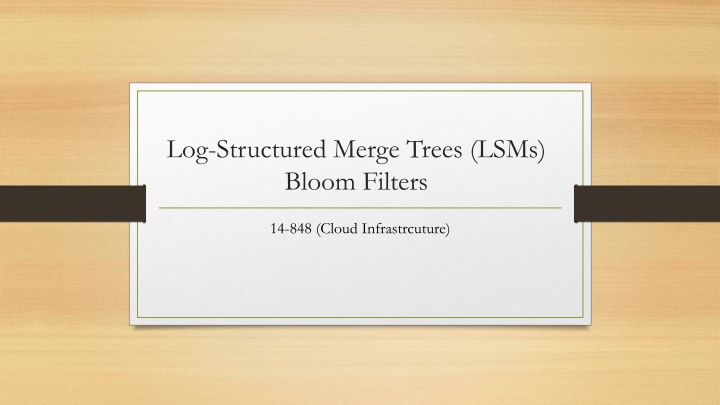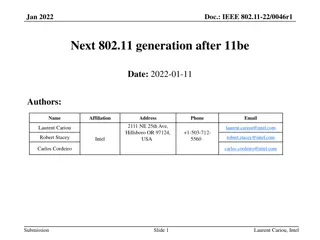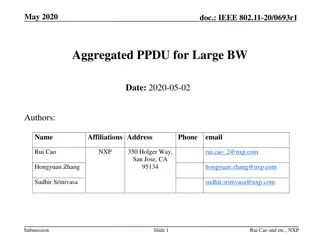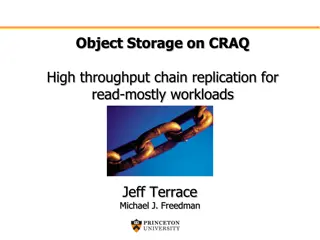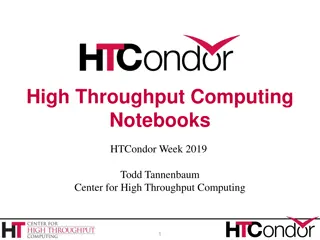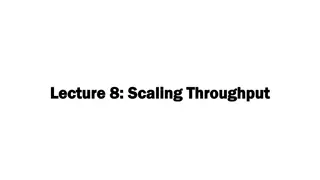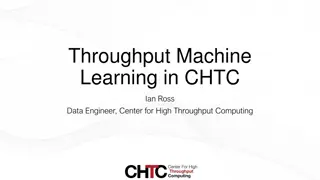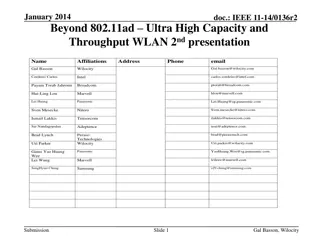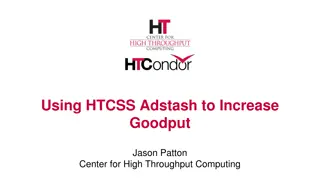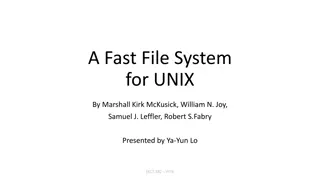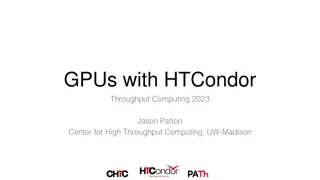Efficient Data Management Strategies for High-Throughput Systems
This content discusses the use of Log-Structured Merge Trees (LSMs) and Bloom Filters in cloud infrastructure to manage high-throughput updates efficiently. It explores strategies such as collecting and batching updates in memory, spilling data from memory to disk, and merging in-memory and on-disk data structures effectively.
Download Presentation

Please find below an Image/Link to download the presentation.
The content on the website is provided AS IS for your information and personal use only. It may not be sold, licensed, or shared on other websites without obtaining consent from the author.If you encounter any issues during the download, it is possible that the publisher has removed the file from their server.
You are allowed to download the files provided on this website for personal or commercial use, subject to the condition that they are used lawfully. All files are the property of their respective owners.
The content on the website is provided AS IS for your information and personal use only. It may not be sold, licensed, or shared on other websites without obtaining consent from the author.
E N D
Presentation Transcript
Log-Structured Merge Trees (LSMs) Bloom Filters 14-848 (Cloud Infrastrcuture)
Scenario A system is needed to support high-throughput updates The total data volume is larger than the main memory budget Writes to secondary storage occur more quickly and efficiently when batched than when written individually. For example, writing a whole block of data at a time amortizes disk seek and rotational delay Sorting and indexing data in main memory can be done relatively efficiently causing relatively little delay.
Collect and Batch Updates In Memory Collect updates in memory Sort them somehow Sorted string list Tree, Etc. Updates possible to in-memory values But, once a value is written to disk, it stays written Queries will need to find all records and merge Tombstone deletes
Spill From Memory To Disk As memory budget approaches full, spill them to disk Write out entire sorted string table Write out a subtree, then remove and prune it in memory Each dump from memory to disk forms a run of some kind Runs are time ordered
Merge, Idea #1 Possibility #1: Merge portions of in-memory data structure into on-disk data structure as spilled Common when pruning in-memory trees and merging into on-disk trees Slows the freeing of memory
Merge Idea #2 Possibility #2: Dump from memory into new run , i.e. data structure in secondary storage Maintain in-memory Bloom Filters, one per disk run, to support queries Upon query, check Bloom Filters Then check on-disk runs only where Bloom filters indicated possible match Merge updates disk data structures in background By similar tree pruning, if tree By merging files into new files if tables Delete then update Bloom Filter, since false positives aren t fatal
Merge Idea #3 Compaction occurs as part of the merges Deletes Tombstoned records Merges multiple updates into one Recovers storage from merged updates and deleted values
Log-Structured Merge Trees (LSMs) When we spill subtrees or branches from an in-memory tree into a tree in secondary storage, this strategy is known as a Log-Structured Merge Tree (LSM) Tree The in-memory tree is often known as C0 and the tree in secondary storage is known as C1. If there are more levels of trees (not within a tree), they are known as C1,C2,etc.
Memtable, SSIndex, SSTable Common idiom in practice Memtable in main memory contains sorted values and likely sorted <key, offset> index. When spilled to disk is divided into SSTables and SSIndexes written separately Indexes or Bloom Filters kept in memory Merging in background when threshold met in terms of number of tables, etc. Merges perform compaction Write-Ahead logs used to aid recovery. Used in some form by Cassandra, Hbase, LevelDB, BigTable, Etc.
Summary Overall strategy Fill memory Spill to disk Search disk runs until they can be merged Use Bloom Filters to minimize unproductive searches Updated in-memory, but merge independent changes once on disk. The overall strategy is sound even if it Does not involve trees, for example by using sorted string tables, and Even if it leaves a forest of data structures to be searched after consulting a Bloom Filter.
New Scenario Multiple (May be a large number), independent key-value stores, such as LSMs Each is in secondary storage and relatively slow to access/search. Values may not be contained within zero or more of the stores Never present Written Once Written and Over-Written Written and Lazy Deleted by Tombstoning Multiple partial updates that need to be unioned to form up-to-date record
Goal Minimize wasted time/energy searching data stores which do not have requested key. Add minimal overhead w.r.t. main memory foot-print, processor load, etc.
Idea and Challenges Idea: Keep an in-memory index Challenge: The on-disk data structures are most-likely indexes or keep relatively small metadata and are still too large to fit in memory, hence the need to keep them on disk Large data values are normally kept in separate data stores and indexes keep references to their location, etc. Revised idea: Need an extremely dense index, e.g. ideally one or a few bits per item
Idea #1 Idea: Keep an in-memory hash table: <key, store-ID> Good: Near constant time ability to discover which stores to search Challenges: Need to manage collision Lists get to be expensive in processor and memory Could be limiting
Idea #2 Idea #2: Good: Challenges: Keep one hash table per external store, check each One bit per address: Present or not Search only data structures where present Smaller Fast to check, even given multiple data structures Managing collision means complexity Reducing collision means a much bigger table, which means more memory wasted
Idea #3 Idea: Ignore Collision Good: Bad: Can have small tables with little complexity Could thing something is present in secondary store when it is really a colliding record Waste time looking just to find nothing Thought: If collisions aren t super common, this is probably okay.
Bloom Filter This device is called a Bloom Filter First conceived by Burton Howard Bloom in 1970
Parameters How many keys, max? Memory budget? One bit per address How many hash functions? One bit per hash function consumed per key Less overlap What false positive rate is tolerable? Based upon the probabilities, we could reduce this to an equation. But, we ll take a pass. It is well studied. See Wikipedia for a discussion: https://en.wikipedia.org/wiki/Bloom_filter
